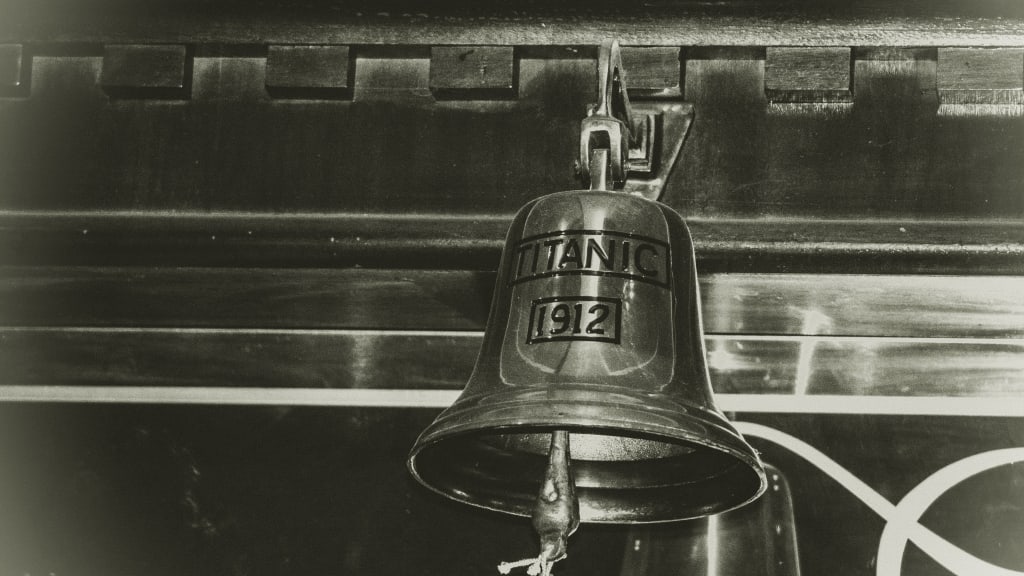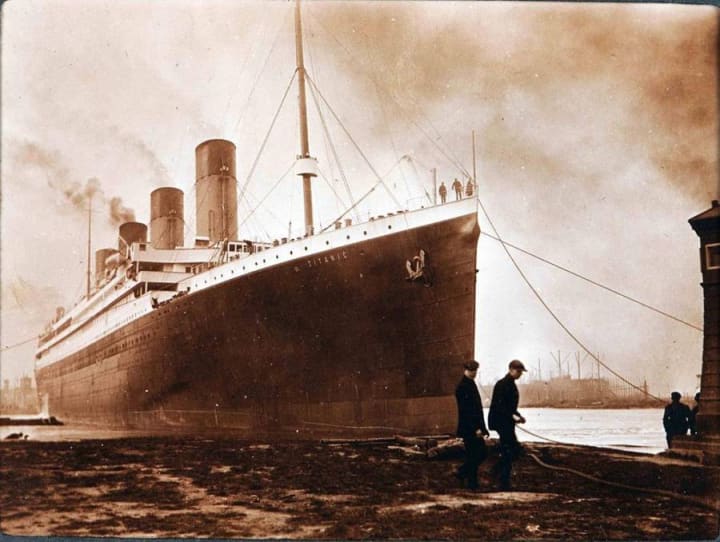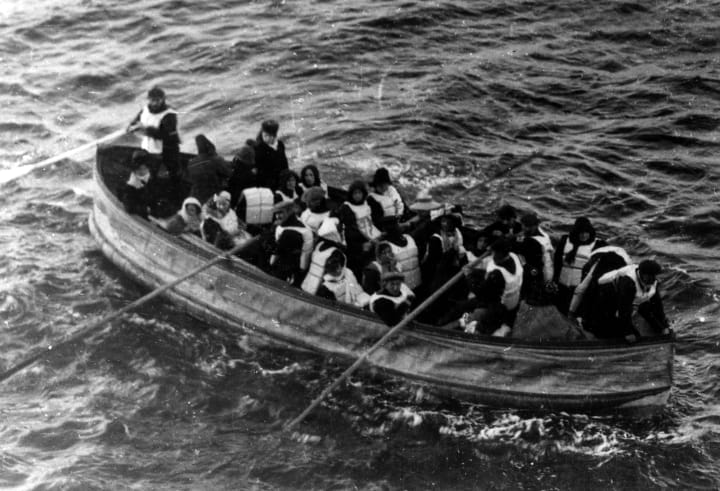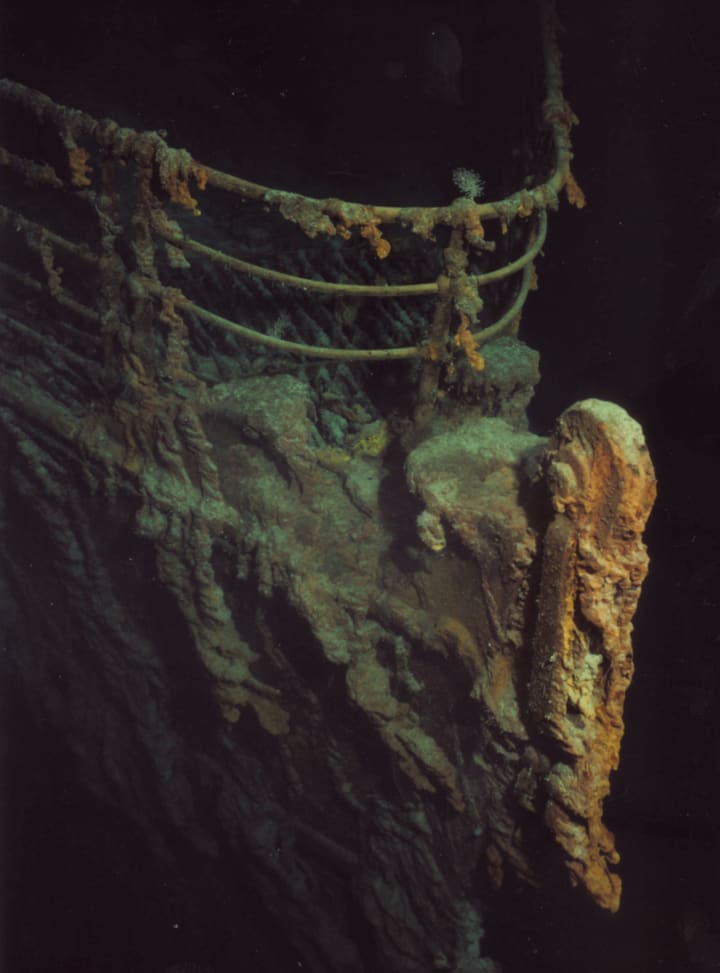110 Years of Titanic Tales
Vocal's Lead Editorial Innovator and Titanic aficionado Erica Wagner reflects on the myth and legend surrounding the storied Ship of Dreams.

“Then suddenly he felt a curious motion break the steady rhythm of the engines. It was a little like coming alongside a dock wall rather heavily. He glanced forward—and stared again. A windjammer, sails set, seemed to be passing along the starboard side. Then he realized it was an iceberg, towering perhaps 100 feet above the water. The next instant it was gone, drifting astern into the dark.”
I suppose I was eight or nine when I first read Walter Lord’s classic account of the sinking of the Titanic, A Night to Remember. Although published in 1955, this slim narrative remains as gripping as it ever was. Lord interviewed dozens of the survivors of the wreck but was able to distil their tales — chilling, inspiring, heartrending — into a moving narrative whose power is not diminished by the fact that the reader, alas, knows exactly how the story will end.

I was hooked. What is it about the story of the sinking of the Titanic that gives it such enduring power? Sure, as a species we like disaster stories. We like descriptions of wealth and grandeur — and tales of the great brought low. King Midas, who paid the price for wishing all he touched turned to gold. Achilles laid low by his heel. An “unsinkable” ship, the greatest liner of her age, an avatar of the young 20th century, on course to make the fastest-ever crossing of the Atlantic Ocean. A ship whose lower decks were full of emigrants, men and women just like us, who had scrimped and saved to realize their dreams in what they hoped would be a new world. And all of it brought to nothing when that iceberg scraped by its brittle steel hull, opening the plates below the waterline and ensuring that the ship’s “watertight compartments” could be no such thing. Not enough lifeboats. A freezing sea.

It is surely proof that narrative alone — the desire to discover what happens next, or how a story ends — is not what pulls us into a tale. The fascination of the Titanic is that — unlike the thousands of passengers, and of course the crew, who boarded the ship in Southampton, Cherbourg or Cobh — we do know the ship’s fate… and perhaps we wonder how we might have behaved on that dreadful night to remember. We know, too, what the disaster seemed to presage: the outbreak of the First World War just two years later, and the final upending of the old world order as many perceived it. The Titanic’s story is both individual and iconic, a real-life story that has entered the realm of myth.
Which is why it is told and retold. There is famously a novella by Morgan Robertson called The Wreck of the Titan, originally entitled Futility — published in 1898, fourteen years before the Titanic set sail, it is a story that resonates eerily with what was to come. There is a wonderful novel by Dame Beryl Bainbridge, Every Man for Himself, which vividly puts the reader aboard the doomed vessel. There is James Cameron’s magnificent 1997 film — I’ll never hear a word against it. Sure, it’s a tear-jerker, but why shouldn’t it be? Its extraordinary recreation of the ship itself, and the brilliant chemistry between its two young stars, makes it a film that stands the test of time.

Again and again, I have been drawn back to that voyage which took place 110 years ago. Thanks to my career as a journalist, I’ve been able to pursue my passion. I’ve in the Fairview Lawn Cemetery, in Halifax, Nova Scotia, where rows of plain gray stones — paid for by the White Star Line, the company that owned the ship — commemorate 121 victims of the sinking on April 15, 1912. I have spoken to Robert Ballard, the oceanographer whose team discovered the wreck 12,000 feet below the ocean’s surface in 1985; and to Millvina Dean, the ship’s last survivor. She was just two months old when she was rescued along with her mother and older brother; her father went down with the ship. She died in 2009. I’ve been to Titanic Belfast, the grand visitor attraction housed on the site of the shipyard, Harland & Wolff Ltd, who built her. (It’s a strange experience, I have to say; poised between celebration and tragedy.) And I’ve sat on a train, late at night, with Margaret Atwood, singing “Oh they built the ship Titanic, to sail the ocean blue…” But that’s another story.
So — let your imagination return to that April of 1912. A century and more ago, certainly: but the people aboard, their families and friends, were not so very different from us. I wonder how your story will end.
About the Creator
Erica Wagner
Lead Editorial Innovator, Vocal. Author, critic, friend, parent, cook. New book: Chief Engineer: Washington Roebling, The Man Who Built the Brooklyn Bridge. Twitter: @EricaWgnr, Insta: @ericawgnr
Reader insights
Nice work
Very well written. Keep up the good work!
Top insights
Excellent storytelling
Original narrative & well developed characters
Eye opening
Niche topic & fresh perspectives
Easy to read and follow
Well-structured & engaging content
Heartfelt and relatable
The story invoked strong personal emotions
Masterful proofreading
Zero grammar & spelling mistakes
On-point and relevant
Writing reflected the title & theme







Comments (1)
This is a well-reasoned essay about the significance of the Titanic and its cultural influence.